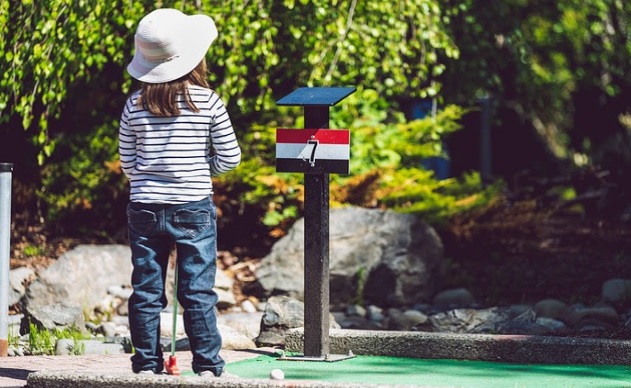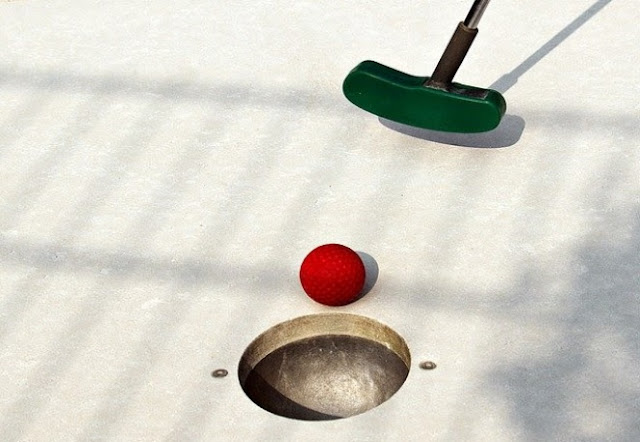Miniature golf is a fun outdoor activity that can be enjoyed by all ages. Unfortunately, the costs involved with building your own are often far too high. However, if you have an idea of what needs to be done around the house, and some minor construction experience, you can easily build your own mini-golf course.
1. Get a green putting mat
One of the more difficult aspects of building your own mini-golf course is producing the playing surface. While you may think that simply dragging some grass sod around will do, it actually won't produce an accurate surface like professional courses. Instead, you should try to get your hands on a green putting mat. You can find them at online stores like Golf Insider UK where there are great putting mats that give you great feedback and provide you with fun ways to practice. These are heavy rubber mats, often used by backyard or indoor putting greens, that can be laid down over any sort of flat area and provide players with an accurately sloped green.
They come in all different sizes, so you can fit them over just about anywhere from a small square to an entire backyard.
2. Decorate with trees and bushes
The next step is to add in some decorations, such as trees and bushes. This will give the course a finished look and make it feel more like the real thing. Search online for some more tips on items and things you will need. You can find these items at many stores, or just buy cheap plastic props from a toy store that you can spray paint to get them looking good enough for play. If there is nothing available in your area, just use whatever household objects you have and spray paint them green and brown to get them looking accurate.
3. Build a clubhouse
In order to make your course more realistic and add an extra dimension of difficulty for players, you should build a simple clubhouse that houses the ball return system and brings all the holes together under one roof. It doesn't have to be anything fancy, just a simple wooden box will suffice, provided it isn't lower than the green slope, so balls don't get stuck inside it when they roll in. Using something like PVC piping makes it easy to install a ball return underneath, so all you have to do at the end of each hole is hit the 'return' button on your ball return machine and the balls will be brought back to you.
4. Attach everything
Now that all of your components are complete, it's time to attach them all. Since this is something you probably built yourself from scratch, there is no uniform way to do this, and you'll have to make due with what you have available for attaching one object to another or running cables through their maze-like structure. The only thing that really needs securing down securely is any furniture-sized item such as trees — using a drill and screws at their base should do the trick nicely.
5. Hit the first putt
If you've followed these directions correctly, then you should be playing mini-golf right now on your own personal course! All that's left for you to do is hit the first one on a new green surface. It might take some practice before you get used to the new surface, so don't worry if things are a little messy at first — just enjoy yourself and try your best!
6. Golf at home
You can also try a golf simulator for garage, it's a good alternative that proved to bear good results in the near future. Of course, various circumstances and factors make it impossible to train at the most optimal time possible, and home golf is an important alternative to consider.
Is mini-golf as good as regular golf?
Although the two are similar, regular golf has far more rules and regulations, which can get very complicated. Mini-golf is much less stressful because there are fewer barriers to entry, so you don't have to be an expert-level golfer in order to have fun. There's also nothing stopping you from picking up the clubs and having a go yourself — just head down to your local mini-golf courses for around!
Where did it originate?
The origins of mini-golf are actually disputed by historians, although many people claim it originated in France during the late 19th century when luxury indoor putting greens started appearing in homes across Paris. These were built as status symbols but quickly became popular with poorer members of society who wanted to have a go. Another theory suggests it came from the early 1900s in Scotland, where putting green areas were constructed as part of bowling alleys across the country, however, this is largely regarded as a myth by historians who say there isn't enough evidence to support this claim.


